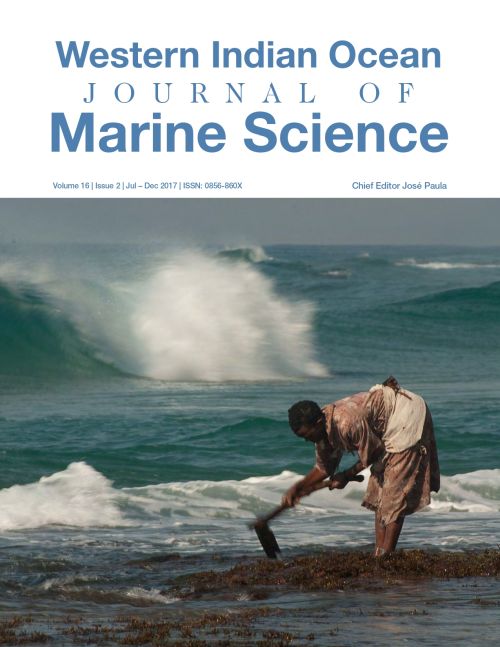Main Article Content
Diet dynamics and feeding strategies of Hilsa kelee (Cuvier, 1829) and Valamugil buchanani (Bleeker, 1853) in the Pangani Estuary, Tanzania: Insights from stomach contents and fatty acid biomarkers
Abstract
Stomach contents and fatty acid (FA) biomarkers were used to investigate the diet and feeding strategies of the marine fish species Hilsa kelee and Valamugil buchanani, across three Pangani estuarine zones (about 7 km apart). The three zones depict heterogeneous distribution of trophic resources along the longitudinal estuary gradient. Despite ecological index and FA trophic niche widths indicating high overlap of trophic resources, the permutational multivariate analysis of variance revealed significant interspecific variations in diet and FA compositions. This highlights the importance of using statistically supported tools when drawing inferences on the diet dynamics of estuarine fish. The dominant diatom and detritus diets reflected the high herbivory C22:6(n-3):C20:5(n-3) and omnivory C18:1(n-9):C18:1(n-7) FA trophic indices of V. buchanani. The diatoms and copepods dominating the diet of H. kelee concurred with the species’ higher carnivory C22:6(n-3):C20:5(n-3) and lower omnivory C18:1(n-9):C18:1(n-7) FA biomarkers. The diet niche breadth index, the Amundsen feeding strategy diagrams, and the FA trophic niche suggest that V. buchanani exhibits a generalist feeding strategy, and H. kelee a mixed feeding strategy that is intermediate between a specialist and a generalist. Due to these differences, it is suggested that V. buchanani demonstrates a higher degree of resilience to anthropogenic disturbances than H. kelee in the Pangani estuary.




